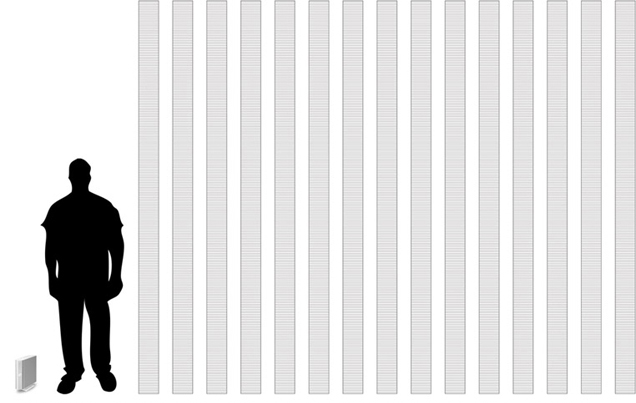
Our belongings are becoming increasingly virtualised. Music is no longer carried on plastic media but as data. Movies can be stored remotely and streamed on demand directly to your television. Thousands of pages can be stored on handheld e-reader devices. All of this is a good thing in terms of resource use, and at the end of the day, the important things are the words and the notes, not the carrier upon which they happen to be conveyed. To provide a personal anecdote related to resource use, if you converted my digital music collection into its equivalent physical version, the tower of compact discs would be 15 storeys tall.

However, it cannot be denied that something has been lost in the transition. Using music as a paradigm, products and services that try and bring some kind of physical aspect into the digital listening experience were examined. A major insight was that people organise their real record collections as if they were curators, using unusual criteria that have personal meaning that are difficult to replicate digitally.
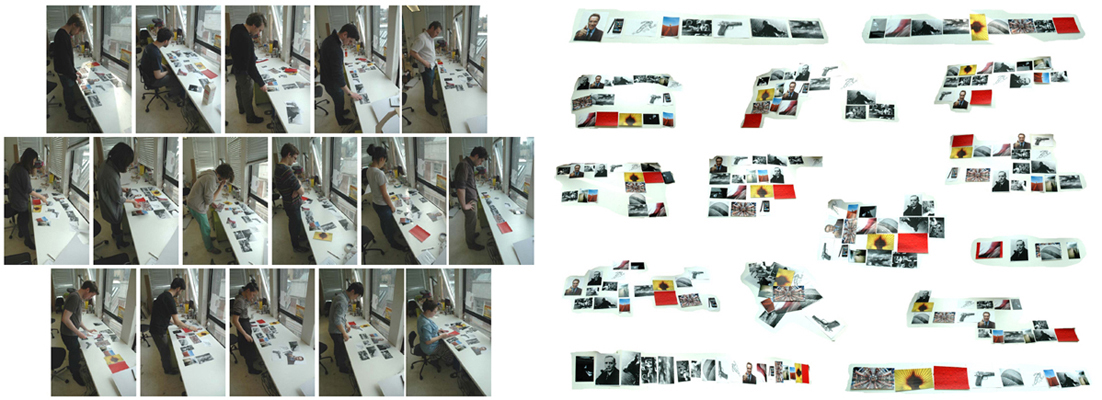
The concept of the paradox of choice also came into consideration, whereby having too many options can actually halt the decision making progress. These curator types used their own taxonomies to help counteract this problem. An experiment in creating visual collages also revealed that interacting with physical objects was far more intuitive than performing the task in the digital realm. Some of the results can be seen above.
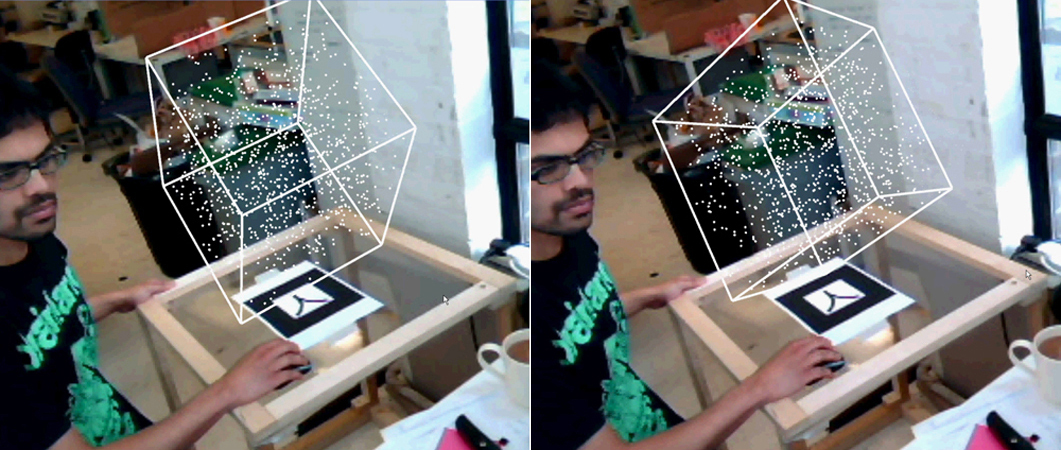
The outcome of the project fell on both sides of the analogue-digital divide to allow them to be benchmarked against each other. The Dataspace program represented individual tracks in a three-dimensional space according to several parameters.
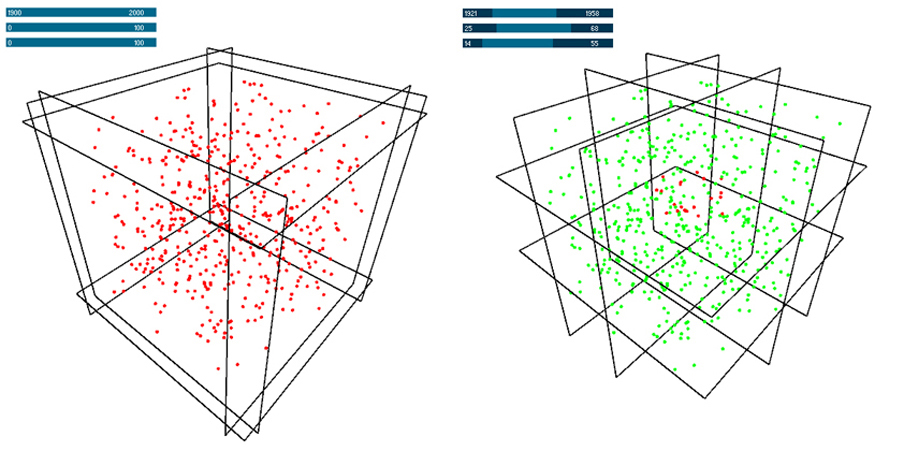
Funnelling down these criteria quickly revealed the area of interest and enabled quicker and easier selection. The 3D space could be explored and controlled entirely through the mouse.
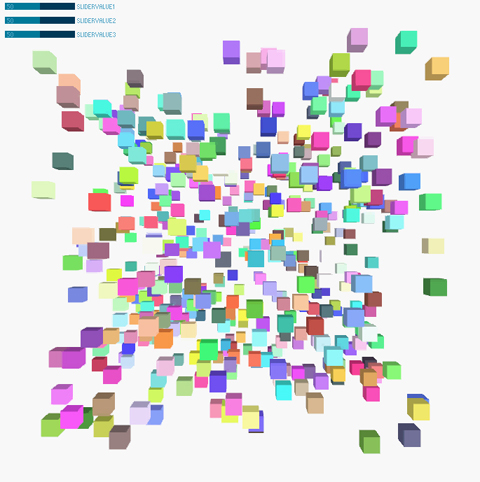
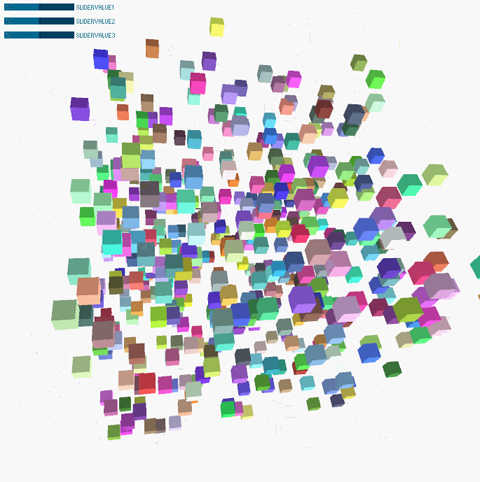
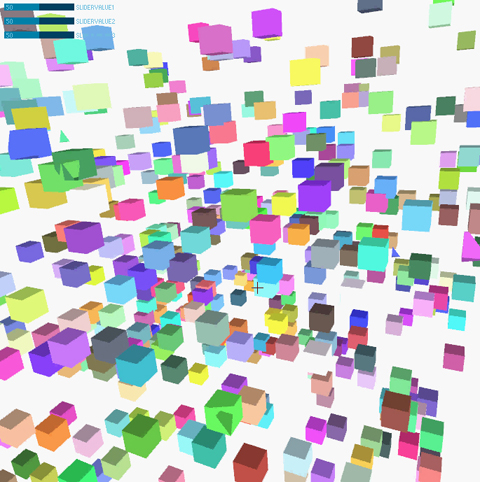
Data set visualised in 3D